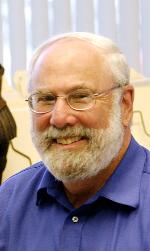Stanford Symposium Highlights Herman Winick’s Many Achievements in International Physics
Summary by Ernie Malamud

- Andrew M. Sessler “Herman Winick Celebration Human Rights and International Activities” http://ssrl.slac.stanford.edu/conferences/workshops/herman-winick-80/documents/andrewsessler.pdf

- Efim Gluskin “Russian and Midwestern Connections” http://ssrl.slac.stanford.edu/conferences/workshops/herman-winick-80/documents/effimgluskin.pdf

- Soichi Wakatsuki “Asian Connections” http://ssrl.slac.stanford.edu/conferences/workshops/herman-winick-80/documents/soichiwakatsuki.pptx

Sessler described Winick’s contributions and leadership in four organizations: the APS Forum on International Physics (FIP), the APS Committee on the International Freedom of Scientists (CIFS), Scholars at Risk, and the Institute of International Education. Herman was FIP Chair in 2007 and currently is Councillor for FIP on the APS Council. He chaired CIFS in 1992 and continues to this day to actively involve himself in critical human rights cases in many different countries.
The creation of SESAME (Synchrotron-light for Experimental Science and Applications in the Middle East) by Herman and Gus Voss in 1997 is a major triumph in international physics. Note the remarkable membership list: Bahrain, Cyprus, Egypt, Iran, Israel, Jordan, Pakistan, the Palestinian Authority and Turkey. This advanced synchrotron will serve a wide spectrum of disciplines, ranging from biology and medical sciences through materials science, physics and chemistry to archeology. This research facility in the Middle East is modeled on CERN, is under the umbrella of UNESCO, and uses science to promote understanding and peace between different countries with different religions and ethnicities.
Gluskin and both showed us wonderful slide shows of photographs of Winick’s worldwide travels as he helped scientists in many countries create synchrotron light sources in many parts of the world as well as be instrumental in the development of proposals for new facilities: Novosibirsk, Armenia, Russia, Taiwan, Japan, China, Thailand, Australia and Africa.
Disclaimer - The articles and opinion pieces found in this issue of the APS Forum on International Physics Newsletter are not peer refereed and represent solely the views of the authors and not necessarily the views of the APS.
